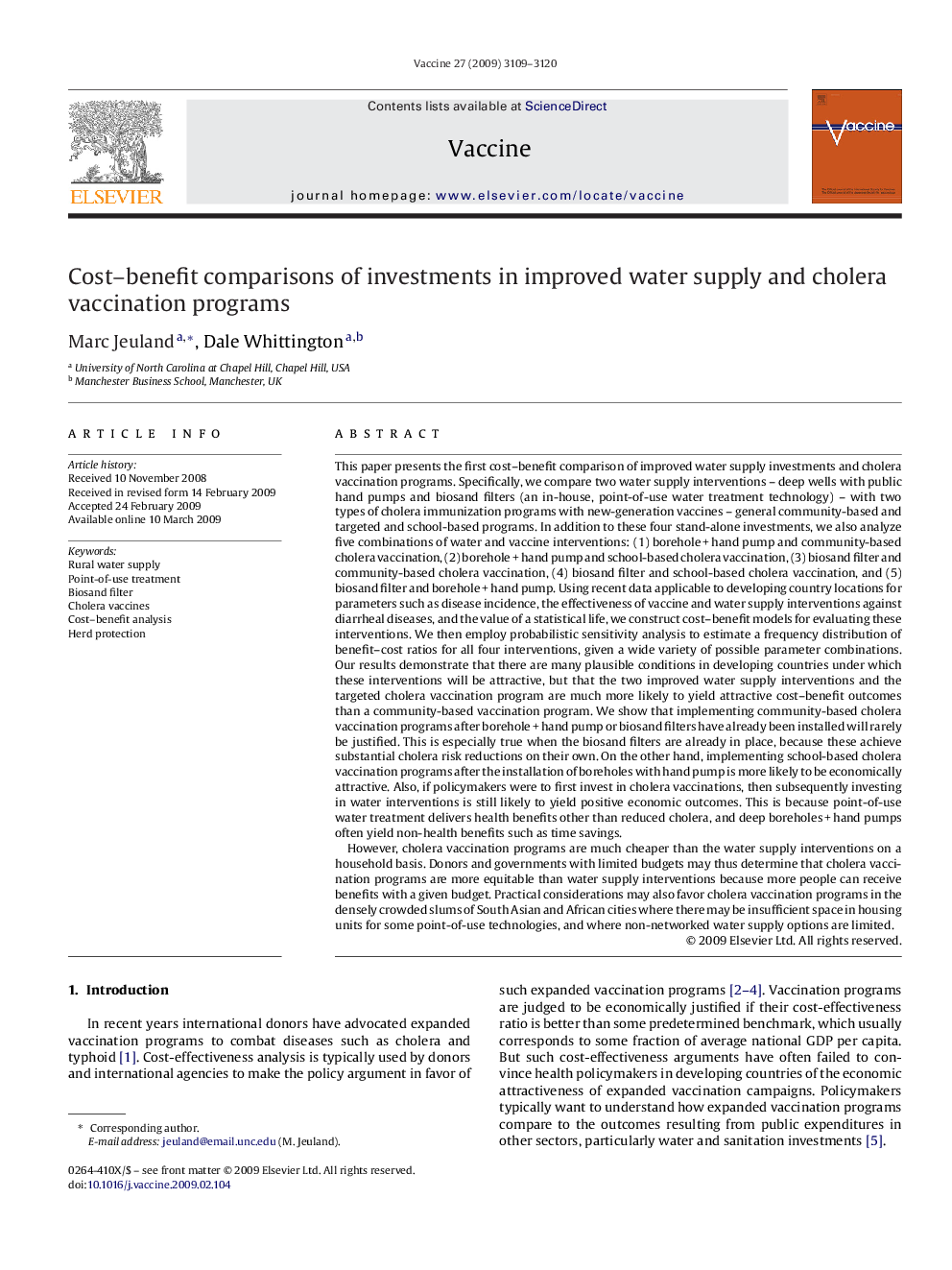| کد مقاله | کد نشریه | سال انتشار | مقاله انگلیسی | نسخه تمام متن |
|---|---|---|---|---|
| 2406646 | 1103089 | 2009 | 12 صفحه PDF | دانلود رایگان |

This paper presents the first cost–benefit comparison of improved water supply investments and cholera vaccination programs. Specifically, we compare two water supply interventions – deep wells with public hand pumps and biosand filters (an in-house, point-of-use water treatment technology) – with two types of cholera immunization programs with new-generation vaccines – general community-based and targeted and school-based programs. In addition to these four stand-alone investments, we also analyze five combinations of water and vaccine interventions: (1) borehole + hand pump and community-based cholera vaccination, (2) borehole + hand pump and school-based cholera vaccination, (3) biosand filter and community-based cholera vaccination, (4) biosand filter and school-based cholera vaccination, and (5) biosand filter and borehole + hand pump. Using recent data applicable to developing country locations for parameters such as disease incidence, the effectiveness of vaccine and water supply interventions against diarrheal diseases, and the value of a statistical life, we construct cost–benefit models for evaluating these interventions. We then employ probabilistic sensitivity analysis to estimate a frequency distribution of benefit–cost ratios for all four interventions, given a wide variety of possible parameter combinations. Our results demonstrate that there are many plausible conditions in developing countries under which these interventions will be attractive, but that the two improved water supply interventions and the targeted cholera vaccination program are much more likely to yield attractive cost–benefit outcomes than a community-based vaccination program. We show that implementing community-based cholera vaccination programs after borehole + hand pump or biosand filters have already been installed will rarely be justified. This is especially true when the biosand filters are already in place, because these achieve substantial cholera risk reductions on their own. On the other hand, implementing school-based cholera vaccination programs after the installation of boreholes with hand pump is more likely to be economically attractive. Also, if policymakers were to first invest in cholera vaccinations, then subsequently investing in water interventions is still likely to yield positive economic outcomes. This is because point-of-use water treatment delivers health benefits other than reduced cholera, and deep boreholes + hand pumps often yield non-health benefits such as time savings.However, cholera vaccination programs are much cheaper than the water supply interventions on a household basis. Donors and governments with limited budgets may thus determine that cholera vaccination programs are more equitable than water supply interventions because more people can receive benefits with a given budget. Practical considerations may also favor cholera vaccination programs in the densely crowded slums of South Asian and African cities where there may be insufficient space in housing units for some point-of-use technologies, and where non-networked water supply options are limited.
Journal: Vaccine - Volume 27, Issue 23, 18 May 2009, Pages 3109–3120